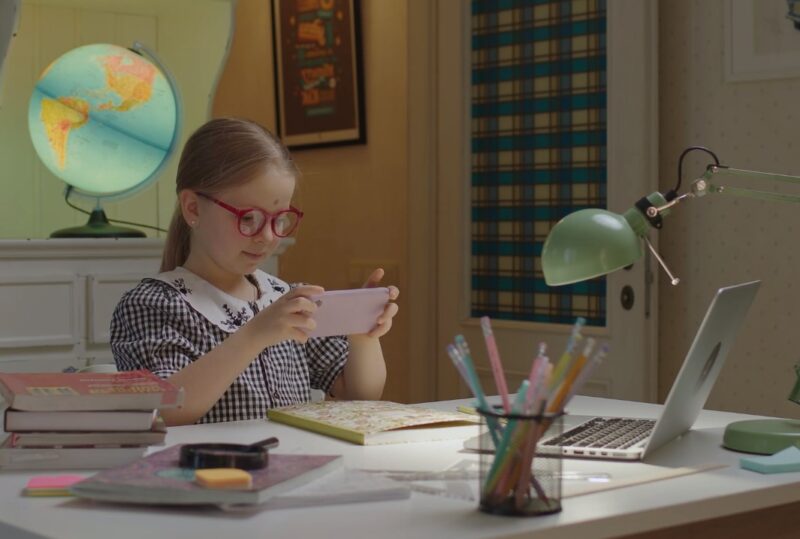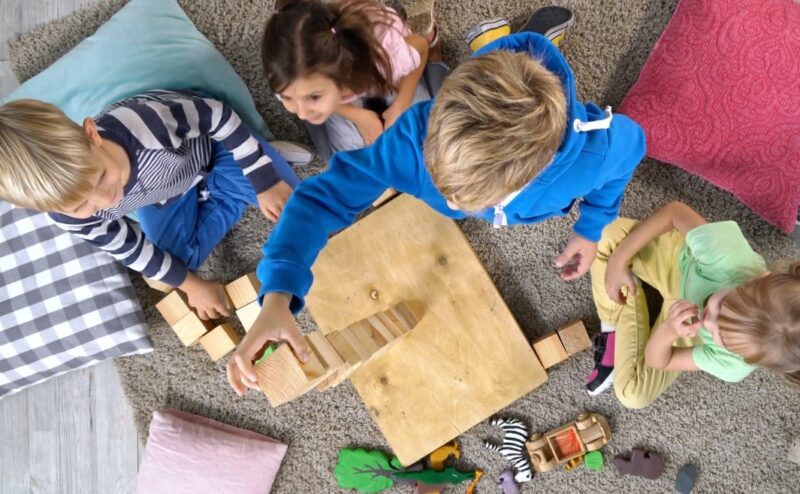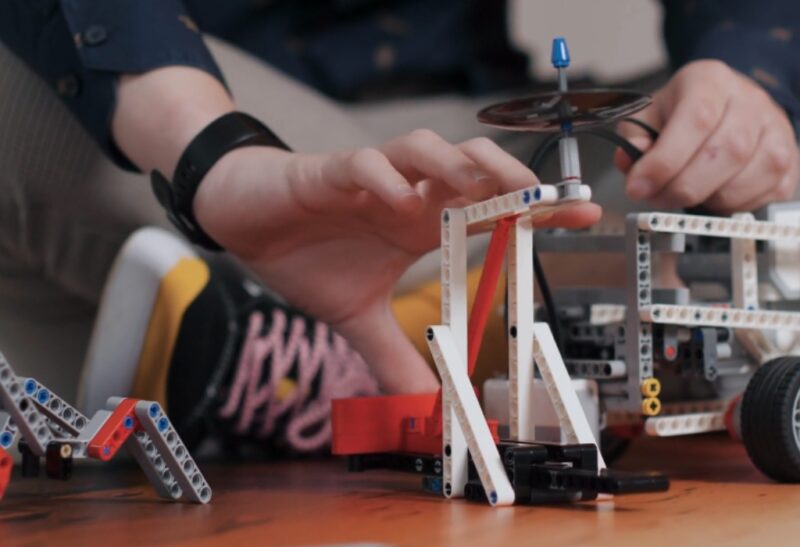The world is evolving at an unprecedented pace, largely due to advancements in technology and engineering. As we navigate this new terrain, it is essential that we equip our children with the tools to understand, engage with, and shape their surroundings. One powerful and engaging way to achieve this is through engineering games, which are an incredible conduit for fostering creativity in kids. These games are not only fun but also educate and inspire.
They involve aspects of planning, designing, building, and problem-solving that offers a playful yet informative perspective on engineering. Imagine if we could shape a generation of children who view problem-solving as a fun activity, not a chore, and who approach the world with a solution-oriented mindset. The impacts could be profound and far-reaching. This could potentially mean a future characterized by prolific innovators and creative problem solvers who could apply their skills to address various global issues.
Creativity is the spark that fuels innovation. Therefore, cultivating creativity is not just about artistic expression; it’s about developing the capacity for original thought, flexibility, and problem-solving. In essence, engineering games are a ticket to the future for our children—a future where they’re not just consumers of technology and engineering marvels, but creators and innovators.
Benefits

Engineering games offer a myriad of cognitive benefits to children. The act of playing stimulates the brain and can enhance memory, attention, motor skills, and creative problem-solving. Through these games, children gain the opportunity to explore and understand complex concepts in a simplified and enjoyable manner. When children engage in engineering games, they’re not just having fun they’re learning about physics, materials, design, and a host of other related concepts.
This contributes to an overall improvement in their cognitive abilities, such as memory and attention. They learn to visualize and manipulate 3D objects in their mind, improving spatial intelligence a vital skill in many scientific and technical professions. Moreover, these games foster problem-solving abilities. Engineering challenges require children to devise solutions, try them out, and learn from their failures. This iterative process is at the core of scientific and engineering advancements.
By adopting this mindset, children become resilient learners who are not deterred by failures but see them as opportunities for improvement. They also develop critical thinking abilities as they evaluate different solutions and choose the most effective one. Furthermore, playing engineering games can enhance creativity an essential component of cognitive development.
Creativity is not just about coming up with original ideas; it’s about connecting ideas in unique ways. By manipulating objects and solving problems in engineering games, children learn to think “outside the box” and apply creativity in novel and practical ways. They become better at brainstorming and innovating, which are valuable skills in all walks of life.
Construction-themed Engineering Games
There’s something deeply satisfying about building something with your own hands. They tap into this instinct, offering kids a chance to create, experiment, and observe the outcomes of their decisions. These games can range from simple block stacking to complex model-building kits, all designed to stimulate creativity and develop problem-solving skills. One of the most popular construction-themed games is Lego.
Lego sets present children with engineering challenges that require spatial intelligence, creativity, and problem-solving. Whether they’re building according to instructions or creating their own structures, kids learn about stability, symmetry, and balance. They develop an understanding of how different parts can come together to form a whole, and they also experience the satisfaction of seeing their ideas materialize.
Another classic game is Jenga, which teaches kids about balance and precision. Each block removed and stacked adds an element of instability, teaching children about structural integrity and gravity. It’s a simple yet powerful introduction to the principles of construction engineering. There are also model-building kits, such as K’NEX, that provide kids with a more intricate understanding of engineering concepts.
These kits include various components that children can use to construct different models, such as vehicles, buildings, or bridges. This not only promotes creativity as kids design their models, but it also enhances problem-solving skills as they figure out how to assemble the parts to create a functioning structure. These construction-themed games provide a fun and engaging way for kids to delve into the world of engineering. They promote creativity, enhance problem-solving skills, and lay a solid foundation for understanding engineering concepts.
Puzzles

They present kids with problems that they must solve using logic, critical thinking, and creativity. These games are an excellent way to introduce kids to the principles of engineering, as they involve analyzing a situation, devising a solution, and testing that solution to see if it works. One popular example is the game Rush Hour, where players must rearrange cars on a grid to clear a path for a particular vehicle.
This game enhances spatial reasoning and planning skills, as players must visualize the movements and predict the outcomes before making a move. Another game that promotes critical thinking is Gravity Maze, a combination of a logic game and a marble run. Players must build a path for a marble to reach a target, using towers of different heights. The game introduces the concept of gravity and spatial orientation, requiring players to think in three dimensions.
Similarly, games like Circuit Maze introduce electrical engineering concepts in a fun and engaging way. Players must arrange pieces on a grid to create a functioning circuit and light up specific beacons. This game fosters an understanding of how circuits work, as well as enhancing problem-solving skills. These puzzle-based games provide an engaging way for children to develop their critical thinking skills while learning basic engineering concepts. They offer a hands-on, interactive experience that stimulates the mind and sparks curiosity about how things work.
Design and Architecture

Design and architecture-focused engineering games present children with opportunities to explore the principles of design, form, and structure. They help children appreciate the aesthetics of design while understanding the practicalities of building stable structures. Minecraft is a fantastic example of a design-oriented engineering game. It allows children to construct and manipulate 3D objects in a virtual world, helping them understand concepts like volume, area, and spatial orientation. It also encourages creativity, as there are no limits to what they can build.
Architecto is another game that fosters spatial intelligence and an understanding of geometrical principles. It challenges players to transform specific shapes into different structures, helping them appreciate the role of geometry in design and architecture. Monument Valley is a game that takes design and architecture to another level. Players navigate through intricate, Escher-like architectures manipulating the environment to progress.
The game offers a unique way to develop spatial reasoning and problem-solving skills. These games not only teach children about engineering concepts but also spark their creativity. By designing their structures, they learn to innovate and think outside the box a skill that will serve them well in the future.
Science and Math
STEM (Science, Technology, Engineering, Mathematics) focused games combine different aspects of these disciplines to create an engaging learning experience. They allow children to see the practical applications of what they learn in their science and math classes, thus enhancing their understanding and appreciation of these subjects. Osmo Genius Kit is an excellent example of a STEM-focused game.
It incorporates tangible pieces with a digital interface to teach various concepts, from physics to art. It’s an engaging way for kids to learn and apply science and math concepts. Snap Circuits is another game that combines elements of STEM. It introduces children to the basics of electronics. Players must snap together different components to create a functioning circuit, teaching them about electricity and circuits in a hands-on way. Robot Turtles is a board game that introduces kids to the concepts of programming.
Players must give their turtles instructions to navigate through a maze, teaching them about commands, sequences, and debugging. These STEM-focused games offer a fun and engaging way for kids to delve into science, technology, engineering, and math. They promote critical thinking, problem-solving, and creativity while enhancing their understanding of STEM concepts.
Robotics and Coding

The importance of understanding technology and developing coding skills in today’s digital age cannot be overstated. Robotics and coding-based engineering games are excellent ways to introduce these skills to children from a young age. One popular robotics game is the LEGO Mindstorms series. These kits allow kids to build their robots and program them to perform different tasks. They learn about robotics, mechanical engineering, and programming in a hands-on and engaging way.
Coding games like Scratch and Code.org offer an introduction to the principles of programming. Kids can create games, animations, or interactive stories by arranging blocks of code. They learn about loops, conditional statements, and variables while enhancing their problem-solving and critical-thinking skills. Games like these not only teach children about technology and programming but also spark their creativity. They offer a platform where kids can bring their ideas to life, promoting innovation and a solution-oriented mindset.
Environmental and Sustainability
Engineering isn’t just about building structures or creating machines it’s also about solving real-world problems. Environmental and sustainability-themed engineering games inspire children to think about how they can make a difference in the world. Games like EcoChains: Arctic Crisis introduces children to the concepts of ecology and environmental balance. Players must build food chains to survive in the Arctic, teaching them about ecosystems and the impacts of climate change.
Planet Rescue is a virtual reality game that presents players with environmental challenges that they must solve using engineering principles. This game teaches kids about the importance of sustainability and inspires them to think of innovative solutions to environmental problems. These games foster a sense of responsibility and consciousness about the environment. They help children understand the impacts of human actions on our planet and inspire them to use their creativity and problem-solving skills to make a difference.
Virtual Reality and Augmented Reality

Virtual reality (VR) and augmented reality (AR) offer immersive experiences that can make learning even more engaging and enjoyable. These technologies allow children to interact with 3D objects and environments, enhancing their understanding of spatial relationships and engineering principles. Games like Tilt Brush allow kids to create 3D designs in a virtual space. This enhances their spatial intelligence and promotes creativity as they can design anything they imagine.
In contrast, AR games like Augie introduce coding in an engaging way. Kids can program a virtual robot to navigate through different courses in their real environment, enhancing their understanding of programming and robotics. These VR and AR games provide an immersive and interactive experience that makes learning fun. They promote creativity, problem-solving, and critical thinking, providing a unique way for kids to engage with engineering concepts.
Team-building Engineering Games
Engineering is often a collaborative effort. Team-building engineering games can help children develop their communication and collaboration skills, essential for any future engineer. Games like Spaceteam require players to work together to operate a spaceship. Each player is responsible for different controls, and they must communicate effectively to navigate through space. This game fosters teamwork, communication, and problem-solving skills.
Another example is the Bridge Building Game, where players must work together to build a bridge with the provided materials. This game encourages collaboration, planning, and problem-solving. These games not only teach children about engineering concepts but also enhance their social skills. They learn to work together, communicate their ideas effectively, and solve problems collaboratively.
DIY Engineering Games
You don’t always need fancy kits or digital games to introduce children to engineering. DIY engineering games using household materials can be just as effective in sparking creativity and teaching engineering principles. For instance, you can challenge your kids to build the tallest tower or the most stable bridge using only paper and tape. This can teach them about stability, balance, and structural design.
Another fun game is creating a marble run using cardboard tubes and boxes. This enhances their understanding of gravity, momentum, and trajectory. These DIY games encourage hands-on creativity and problem-solving. They show kids that they can be engineers with just the materials around them, promoting innovation and a can-do mindset.
Engineering Games That Feature Famous Inventions and Inventors to Inspire Young Minds
They can also be a tool to introduce children to famous inventions and inventors, inspiring them to dream big and innovate. For example, games like Timeline: Inventions allow players to learn about historical inventions in a fun and interactive way. This can inspire kids to come up with their own innovative ideas.
The game Inventors! introduces players to famous inventors and their creations. It encourages creativity and innovation, showing kids that they too can create something that can change the world. These games not only teach children about engineering and inventions but also inspire them. They foster a sense of curiosity and wonder, sparking their creativity and ambition.
Conclusion
In conclusion, engineering games offer a fun and engaging way to foster creativity in children while teaching them about engineering principles. They enhance cognitive development, promote critical thinking and problem-solving, and inspire innovation. Whether it’s construction-themed games, puzzle-based games, or DIY games, there’s an engineering game out there that can ignite every child’s imagination and curiosity.
As parents, educators, or mentors, our role is to provide the tools and opportunities for children to explore, learn, and create. By introducing them to engineering games, we’re not just giving them something to play with we’re giving them a ticket to the future, a future where they’re the creators and innovators. Let’s encourage our children’s creativity and inspire them to dream big with these engaging and educational engineering games.







